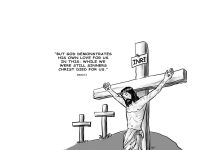HERBERT VEGO
YOU must have heard it said that the young look forward to the future while the old, back to the past. In a sense, it’s true, but if you were 64 years old, as I am now, looking back to the proverbial “good old days” would be worth looking forward to.
Believe it or not, if I could travel back in time, bringing with me a few thousand pesos in my pocket, I would live like a millionaire.
I remember those grade-school days when my late father would often remind me to set aside coins (at that time mostly made of silver) for my piggy bank. He wanted me to develop the habit of saving money so I could be a millionaire someday and enjoy the rest of my life. Today, I wish he were right.
If he was wrong, it was only because the Philippine money has shed much of its buying power. Gone are the days when I could buy a piece of candy for a centavo.
Looking back, I realize I have already made millions of pesos in the over four decades of working life. But it has all gone with the wind. I can’t retire. I still have to work to enable my family to eat three times a day.
But even if I have a million pesos today, it would no longer go a long way. In fact, any family man with a stash of one, two or three million pesos today does not have enough for the rest of his life.
Sa totoo lang, we Filipinos have much more money now than we had half a century ago, but it could buy less goods. Today, if your wallet contains a thousand pesos, it could melt in a single visit to a mall. But, believe it or not, the same amount could feed a family for six months or more in the 1950s and even in the early ’60s!
I should remember. I was 10 years young in 1960 when our parents took us four kids to Quezon City for a two-month summer vacation. Our two-hundred-peso baon, believe it or not, took care of the house rental, food and shopping expenses. Miraculous? Not really. One peso at that time was stronger than today’s one hundred pesos. In fact, the rental rate for the two-storey apartment we occupied on 23-A Dapitan Street was only P60 per month. By sharing the same house with another family, we actually spent the same amount for two months.
At that time, the minimum wage nationwide was P120 per month.
The second time I went to Manila to pursue college education in 1967, prices were still very affordable, while the minimum wage had increased to P180. While studying, I worked at the Manila International Airport post office on a daily wage of P6.
In the mid-1970s, even when President Ferdinand Marcos had already declared martial law, the economy was still relatively stable because price increases were infrequent and would be met with salary increases. I was then working for a music-recording company and was also freelance-writing for newspapers and magazines. With a wife and a baby boy, I made both ends meet on an average monthly income of P700, of which P80 went to each month’s house rental. I could eat a budget meal in a restaurant for P2.
I abandoned Metro Manila life in 1981 to edit the then fledgling weekly Panay News. At that time, the so-called PUs (small Minica taxicabs) were still charging a flat rate of P10 for an intercity ride. There were times when then publisher Danny Fajardo and I would sleep at Hotel Del Rio for P120 per night.
Well, since times have changed, let the memories linger, if only to make us smile./PN







